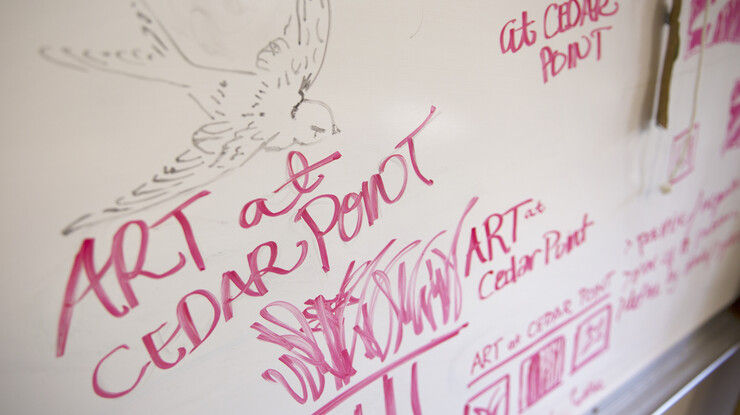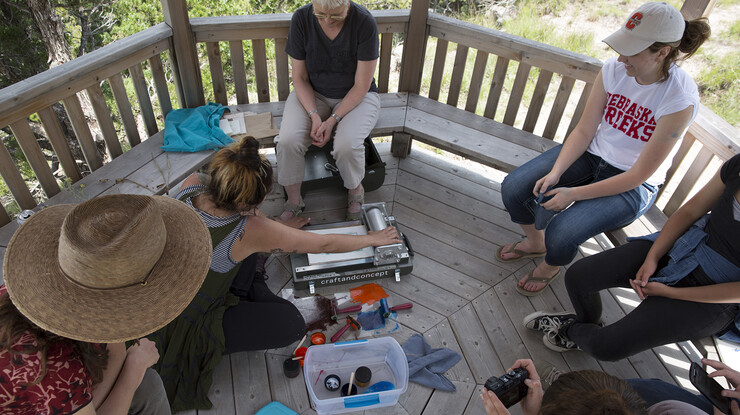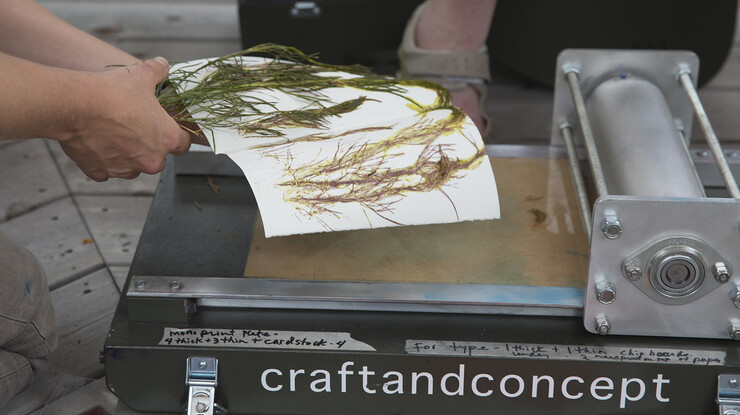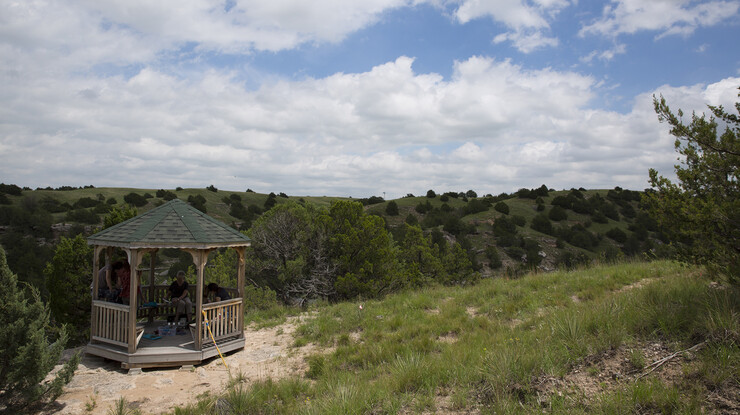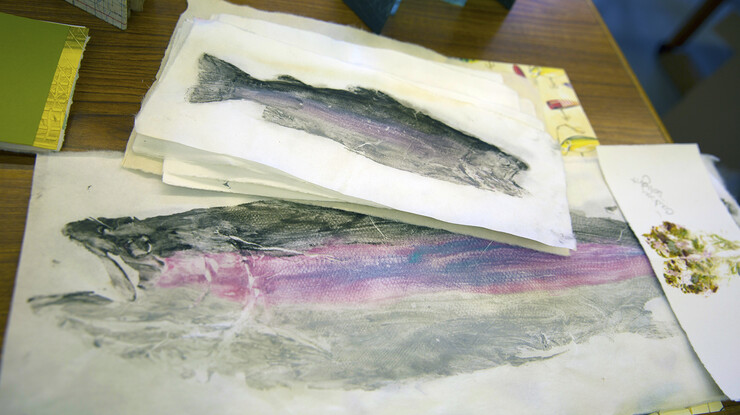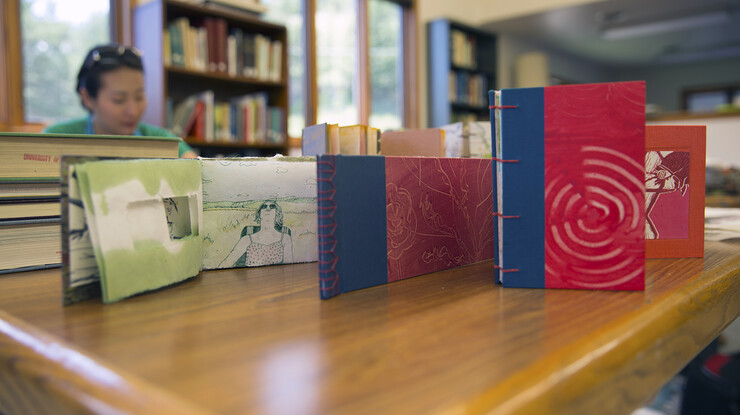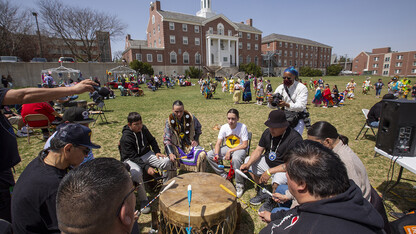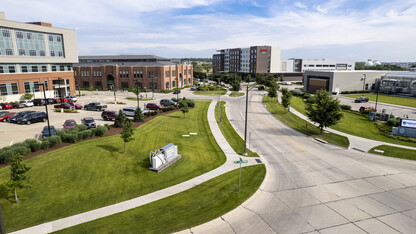· 5 min read
Art course finds niche at Cedar Point
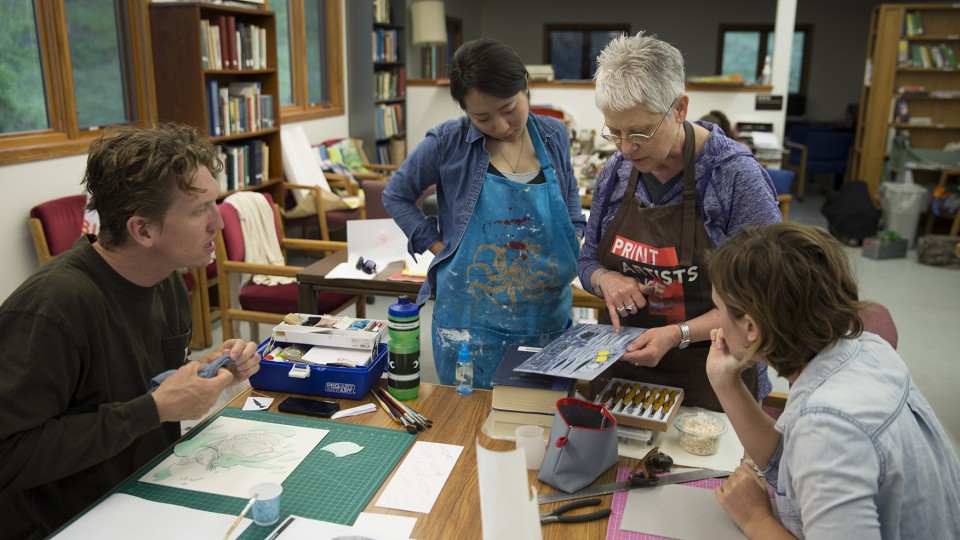
After fueling 40-plus years of scientific exploration, UNL’s Cedar Point Biological Station has started nurturing artistic inspiration.
For the second summer, the Hixson-Lied College of Fine and Performing Arts has offered a two-week art course at the College of Arts and Sciences’ biological research station near Ogallala, Neb. The “Art at Cedar Point” class — most recently held June 8-19 with a focus on ecological printing and bookmaking — allows students to focus on creating art while drawing inspiration from both the natural environment and the students and researchers who study it during the summer season.
“The course is designed to get students to engage with and be inspired by the environment, place and people of Cedar Point,” said Karen Kunc, a professor of art who led development of the field school course. “The students then use that inspiration to focus on creating art.”
Kunc worked with Jon Garbisch, associate director of Cedar Point, to launch the class. It was first offered as a pilot course in summer 2014, with an initial focus on photography.
The class will be offered a minimum of four more summers, with course topics and lead instructors changing each year. Kunc, an internationally renowned printmaker, led the eco-book and printmaking class.
Students in the class ventured across Cedar Point’s 900 acres of rolling prairies and winding canyons, as well as local communities. Items found along the way — ranging from flowers and leaves to mushrooms and a five-foot-long rattlesnake skin — generated ideas to craft prints that formed books. Some of those prints were crafted directly in prairies and atop bluffs using a specialized backpack printing press.
Ashley Bales plucked inspiration from the flowing waters around Cedar Point. A lover of the outdoors, the senior art major donned hip waders and spent some free time fishing in a nearby lake. Trout she pulled from the water were used to make realistic fish prints and led to a book about the lifecycle of trout.
The book started with a fish-egg like pattern and finished with a design that incorporated a print of bones from a 19-inch trout that Bales caught, grilled and served to others at Cedar Point.
“This has been an experience like no other,” Bales said. “It’s an amazing opportunity to be out here and just create art. The other day we spent 16 hours on one project and didn’t even realize it.
“That kind of focus is something I’ve never had in any other class.”
Other book projects crafted by the students were inspired by turtle research, rabbits, mosquitoes, blood cells, rattlesnakes and a specialized jellyfish that never truly dies.
Kunc said the course is designed like a workshop, giving students the freedom to experiment and keep ideas flowing toward various design challenges.
“With normal life distractions and a full schedule of classes, students just can not focus solely on generating art while in Lincoln,” Kunc said. “But here, through this course and in this amazing space, they can concentrate on ideas and simply create art.”
Between the class sessions, students stay overnight in cabins, eat meals prepared in part by colleagues in UNL’s hospitality, restaurant and tourism management program, or visit Lake McConaughy and nearby communities.
Garbisch said the art course — along with a new art residency organized by art and art history, which is open to artists and writers and held at Cedar Point — are a natural fit for the field station and offer a balance between hard science and fine art.
“Biological field stations ran by other universities have offered art courses for a number of years,” Garbisch said. “They are a great addition and expand the diversity of programs we offer.
“Based on the interactions I’ve seen, this concept is nothing but positive for the students, Cedar Point and the university. My hope is that it is something we can continue to offer forever.”
For more information on the course (listed as ARTP 183), click here.
